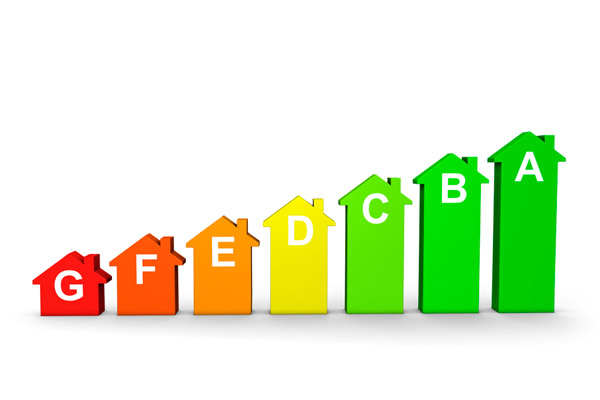What Is An AFUE Rating?
 The HVAC system is responsible for almost half of your household’s energy consumption, according to Energy Star. If you are unhappy with the surging cost of energy, it is where you should focus your reduction efforts. You can try milder settings and shorter usage periods. Consider regular maintenance and reliable repairs. If you have an old home heating system, you may even replace it with a new one that has a high AFUE rating. Get familiar with this acronym. It can help you decrease energy consumption and lower monthly bills.
The HVAC system is responsible for almost half of your household’s energy consumption, according to Energy Star. If you are unhappy with the surging cost of energy, it is where you should focus your reduction efforts. You can try milder settings and shorter usage periods. Consider regular maintenance and reliable repairs. If you have an old home heating system, you may even replace it with a new one that has a high AFUE rating. Get familiar with this acronym. It can help you decrease energy consumption and lower monthly bills.
What Is An AFUE Rating?
Contents
Manufacturers used to come up with their own ways to measure efficiency, usually highlighting their strengths and hiding their weaknesses. The industry came up with a standard to eliminate confusion. The AFUE, or Annual Fuel Utilization Efficiency, was coined by the American Society of Heating, Refrigerating, and Air Conditioning (ASHARE). It quantifies efficiency as a percentage. It is the ratio of heat production and fuel consumption in heating systems.
If you wish to perform your own calculations, get a unit’s projected fuel consumption, and divide it by the specified amount of heat generated as expressed in BTUs. In systems with an 85% AFUE rating, you can expect 85% of the fuel to produce heat. The remaining 15% is lost due to equipment inefficiencies. That means 15% of the fuel you pay for is wasted by the system itself. You may incur additional losses along the ductwork and the thermal envelope. The US Department of Energy estimates up to 35% losses for ducts located in attics, garages, and similar spaces. Reducing these inefficiencies can drastically lower your energy costs.
If you can get a new heating system with a high AFUE, you will enjoy greater energy efficiency in your home. You can use less fuel while staying warm, thus saving you money. Note that this does not apply to electric heat pumps on heating mode. These units use a different metric called the HSPF or Heating Season Performance Factor. On the other hand, the AFUE is useful as a combustion efficiency standard.
The Department of Energy is all about the promotion of energy efficiency across the US. The agency sets the minimum AFUE in different regions. It now stands at 80% for the Southwest and 90% for the Northern states. Manufacturers comply with this standard, ensuring that their new models meet or exceed 90% AFUE.
Finding A Heating System’s AFUE Rating
The Federal Trade Commission wants to help consumers make informed decisions. They directed furnace and boiler manufacturers to specify the AFUE rating for each unit. Companies often print the details in the Energy Guide label. This is the yellow tag that you will find on most appliances. In case you cannot see the AFUE on the label, you can go online and check the manufacturer’s website. The retailer’s website and the owner’s manual may also have the information. Remember that these numbers reflect the initial system efficiency. Every machine becomes less efficient over time. If you want to know the current AFUE of your existing furnace, hire an HVAC technician for accurate measurements.
What Is A Decent AFUE Rating?

Numbers need context to be useful. In the case of AFUE, consumers want to know how high they should aim for if they want an efficient system. The Department of Energy currently recommends 80% for the Southwest region and 90% for the Northwest region. These may increase as technology improves and expectations increase. New heating systems are always more efficient than older ones. Wear and tear reduce performance over time. If you look at previous models, you may find AFUE in the 56% to 70% range. Today, all new heaters in the market have values of 78% and up. Anything under 80% is considered low-efficiency, while anything above 90% is high-efficiency. The highest values available hover around the 98.5% mark.
How Can Homeowners Use AFUE Ratings?
AFUE helps homeowners gauge how well a furnace runs. Heating systems suffer from efficiency decline as they get older, so your decade-old furnace is probably running at a much lower efficiency today than when it was first installed. The US was not strict about this in the past. Prior to 1975, manufacturers could sell equipment regardless of efficiency. By 1987, the minimum was set at 78%. In 2015, it was adjusted to 80%. Old furnaces that are 15 years or older are generally inefficient, which makes them costly to operate. Replacing them with a newer model will immediately result in energy savings, even if you choose one with the minimum AFUE. If you get a unit with 98.5% AFUE, the monthly savings will be much higher, while the carbon emissions will be much lower.
Should I Buy A High-Efficiency Furnace?
The choice is entirely dependent on personal circumstances. Consider the climate in your region. If you live in a place with extremely cold winters, you will need to make the furnace run often for comfort. That means high fuel consumption. If you decide to upgrade to a high-efficiency furnace, your fuel can last longer so you don’t have to buy as much of it. The savings on fuel can justify the amount you will spend on the acquisition of the new heating system. According to studies, US households spend an average of $600 on heating annually. You can cut almost 20% with an upgrade, and that adds up over time.
You should also think about your financial situation. Expect to spend $1,000 more than the usual amount for a high-efficiency model. You will get up to 20 years of service from this system, so the total savings can make up for the higher cost. If you can’t afford it right now, you can delay the purchase until you’re ready or look for financing options.
Features of High AFUE Furnaces
Furnaces achieve high AFUE thanks to new technologies. Current models on the market have features that older generations do not have, including the following:
- Variable speed blowers
- Variable heat output
- Secondary heat exchanger
- Direct spark ignition
- Improved air filtration
Conclusion
AFUE quantifies the energy efficiency of heating systems. It serves as the basis for the Department of Energy’s furnace efficiency standards. Units can only be sold in the US if the AFUE is at least 80%.
Call Lawes Company For All Of Your HVAC Needs

Lawes Company has a longstanding reputation for supplying reliable HVAC repair services throughout Monmouth and Ocean Counties, New Jersey. Our technicians are the very best and can perform replacements, tune-ups, repairs, and installations for your HVAC needs. They are knowledgeable and boast ample amounts of industry experience.
Get the most competitive prices on HVAC services locally from Lawes Company. Experience greater home comfort, lower energy costs, and higher levels of energy efficiency with our HVAC maintenance support. If your HVAC system needs a repair or if you want to replace this equipment, we will help you find the right products for your budget and your home. Our work always comes backed by a reliable guarantee. For a service appointment, call Lawes Company. Getting an in-home estimate from us won’t cost you a thing.
Contact us now at (732) 741-6300 to find out more!